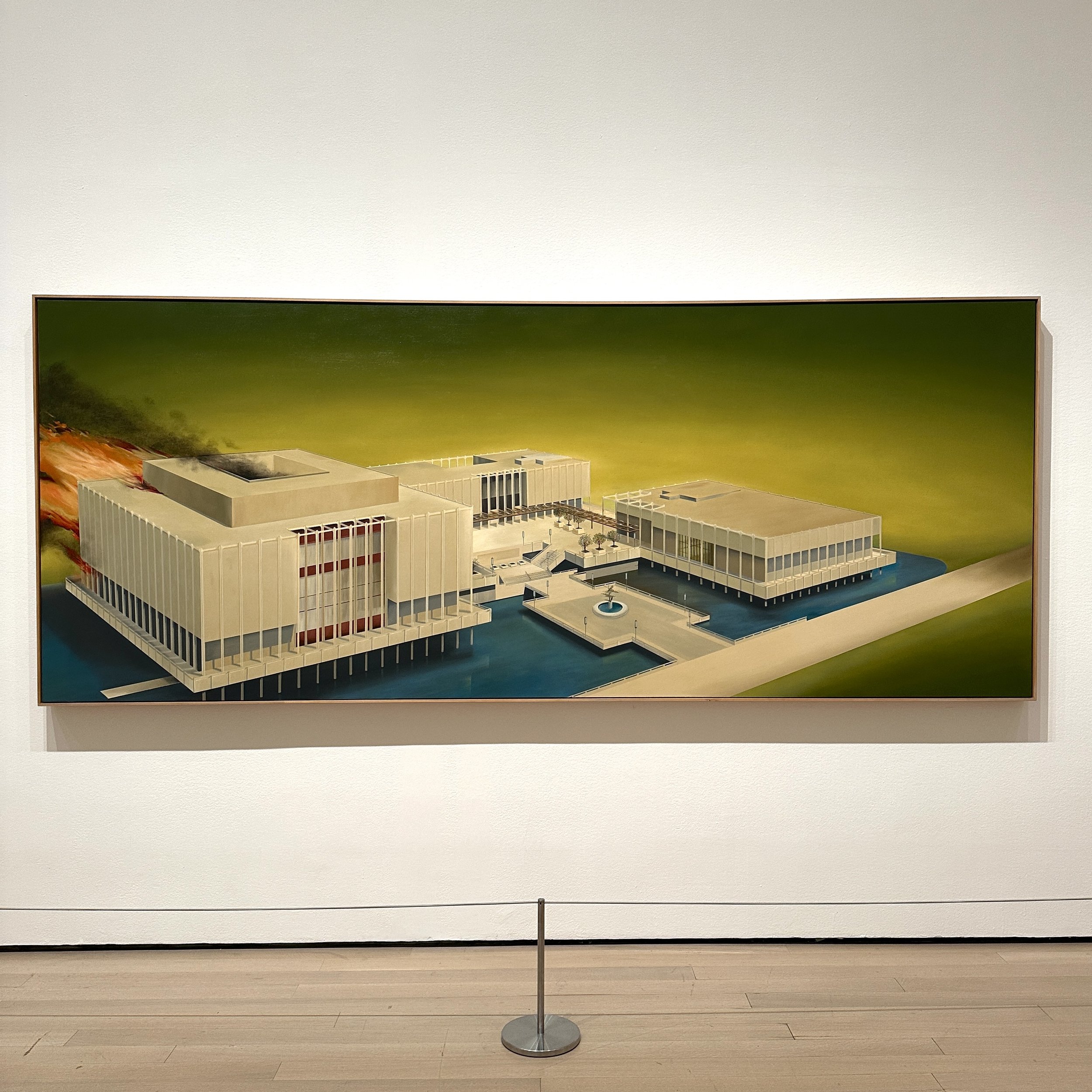Art as A Necessity: Rethinking the Fundamentals of Human Survival
After reading our April Book Club pick, What Art Does by Brian Eno and Bette Adriaanse, I started thinking about the importance of art—and why it’s so rarely mentioned when we talk about basic human needs: clothing, food, and shelter.
The book explores how art is not just a cultural add-on but a vital, sensory way of engaging with the world. That idea stuck with me. If art shapes how we perceive, connect, and innovate—why isn’t it considered essential in the same way food, clothing, and shelter are?
Ask anyone what the necessities of life are, and you’ll likely hear the same trio: food, clothing, and shelter. These are the foundational elements of human survival—tangible, measurable, non-negotiable. But lurking beneath each of these is something we rarely include in the conversation, though it’s woven into every one of them:
Art.
Not just “art” in the traditional sense—paintings, galleries, and museums—but the broader spectrum of human creativity. Design. Expression. Aesthetic choice. Innovation. Without art, there is no architecture, no fashion, no culinary tradition, no meaningful communication. In fact, without art, we wouldn’t even know how to communicate that food, clothing, and shelter are important.
So why don’t we talk about art the same way?
Drawings of lions hunting bison in the End Chamber of Chauvet–Pont d'Arc, Ardèche, France.
Survival is Designed
Let’s start with shelter. Every human-made structure, from ancient mud huts to towering glass skyscrapers, is an act of design. Architecture, one of the oldest and most respected art forms, doesn’t just provide protection—it reflects intention, culture, and identity. Even the earliest humans chose to draw and paint in their caves. They didn’t just survive inside them—they lived.
Clothing? The same. We dress for function, but also for identity, status, beauty. Textiles carry culture. Embroidery tells stories. The pattern on a child’s blanket, the fabric on a ceremonial robe—these are not random. They are art in wearable form.
And food? The act of cooking, plating, seasoning—it's all creative. Recipes are inventions. Flavors are layered. Every dish tells a story, whether it’s passed down from generations or posted on Instagram. The kitchen is a studio just like the painters.
Collection of handmade pieces from Joyce J. Scott
In the 1970s and 1980s, Scott made artwear, head-to-toe looks for herself and her friends. Incorporating materials and techniques that pay homage to the diverse cultural traditions encountered in her travels, Scott's artwear invited conversation about these sources, while inventing a style all her own.
No Communication Without Art
Long before we wrote anything down, we told stories through symbols and drawings. The earliest forms of language were visual—etched into stone, painted on walls, shaped by hands in clay. Every alphabet was designed. Every musical scale was discovered. Every spoken word is, at its heart, an abstract sound charged with symbolic meaning.
We do not communicate without art. We communicate through it.
Egyptian (Old Kingdom, Dynasty 5), False-Door Stele, Limestone, 2475-2345 BC
The false-door stele, a gravestone in the shape of a door, stood between hidden burial chambers and a funerary chapel where offerings were left for the deceased. The stele was the symbolic door through which the Ka of the deceased passed to partake of the offerings. Images of the deceased, a priestess named Inti, occur six times at the bottom of the relief and once over the "door," where she is shown enjoying her funerary banquet.
Why Isn’t Art Counted Among Necessities?
The answer might be simple: we’ve forgotten. Art is so embedded into the fabric of life that we no longer see it. It’s in the curves of a chair, the logo on a soup can, the story behind a song. But because we don’t always call it “art,” we forget to recognize it as such.
Worse, we’ve been conditioned to see art as an extra—a luxury, an elective, an afterthought to the “real” work of survival.
But what is survival without meaning?
Art Is the Common Thread
Without art, we’d still eat—but we wouldn’t savor.
We’d wear clothes—but they wouldn’t express.
We’d build homes—but they wouldn’t inspire.
We’d speak—but we wouldn’t connect.
Art is what turns existence into experience.
It’s the thread running through every so-called necessity. It shapes the decisions we make, the things we build, the stories we share. It’s not the opposite of survival—it’s the expression of it.
Sheila Hicks, Lianes Lilas, linen, cotton, wool, 2018. (Collection of the Artist)
When Art Is Under Attack
And yet, even as art surrounds us, it’s under threat. Across the country—and around the world—art programs are being defunded. School curricula are stripping away music, visual art, and creative writing. Public libraries are removing books. Museums are closing. Entire communities are losing access to spaces that celebrate imagination and cultural memory.
This isn’t just a budget issue. It’s an existential one.
When we defund the arts, we aren’t cutting “extras.” We’re cutting out access to empathy, critical thinking, joy, identity, and freedom of expression. We are narrowing our children’s worldviews and telling future generations that beauty and voice don’t matter.
This erosion isn’t accidental—it’s often political. Silencing art is a time-tested tool of authoritarianism. Erasing books and censoring creativity are not just acts of control—they are acts of cultural amnesia.
To forget art is to forget who we are.
Ed Ruscha, Los Angeles County Museum of Art on Fire, 1965-1968. (Hirshhorn Museum)
Have We Ever Truly Lived Without It?
Let’s stop asking if we need art.
Let’s start asking what kind of society we become without it.
Because a life without art is not just colorless—it’s voiceless.
And a world without artists is one that forgets to dream.








